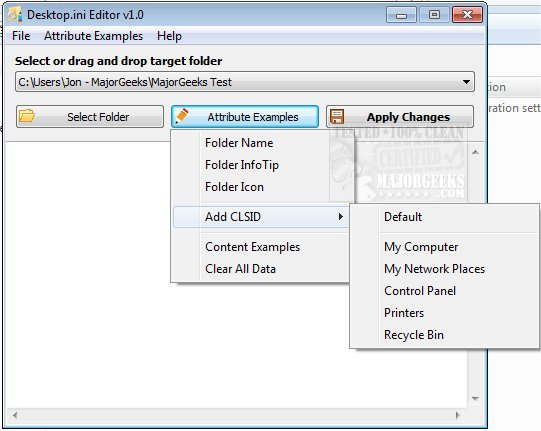Desktop.ini Editor is a portable tool that permits you to access and modify .ini files that are generated each time you create a folder in Windows.
Desktop.ini Editor is a portable tool that permits you to access and modify .ini files that are generated each time you create a folder in Windows.
Each time you create a folder in Windows, it is made utilizing the default folder icon, indexed in a specific order with an ordered text string. This tool is designed to provide you with access to desktop.ini files and make changes as needed. Desktop.ini Editor can help you edit desktop.ini files, set custom folder icons, Folder Info Tips, adding CLSID, and reset folder settings to default. It supports drag n' drop as well as command-line use. It comes in a nicely done interface with everything needed to make the desired modifications in view.
One everyday use of the desktop.ini file is to set custom folder icons. However, it can be utilized for more. The desktop.ini file contains numerous attributes, but the following custom attributes are the most common:
ConfirmFileOp: Set this entry to 0 to avoid a "You Are Deleting a System Folder" warning when deleting or moving the folder.
IconFile: If you want to specify a custom icon for the folder, set this entry to the icon's file name. The .ico file extension is preferred, but it is also possible to specify .bmp files or .exe and .dll files that contain icons.
IconIndex: Set this entry to specify the index for a custom icon. If the file assigned to IconFile only contains a single icon, set IconIndex to 0.
InfoTip: Set this entry to an informational text string. It is displayed as an infotip when the cursor hovers over the folder. If the user clicks the folder, the information text is shown below the standard information in the folder's information block.
Similar:
What Are Desktop.Ini Files and Can You Delete or Hide Them?
How to Change the Recycle Bin Icon in Windows 10 & 11
Download


